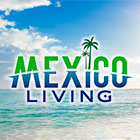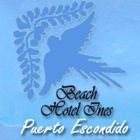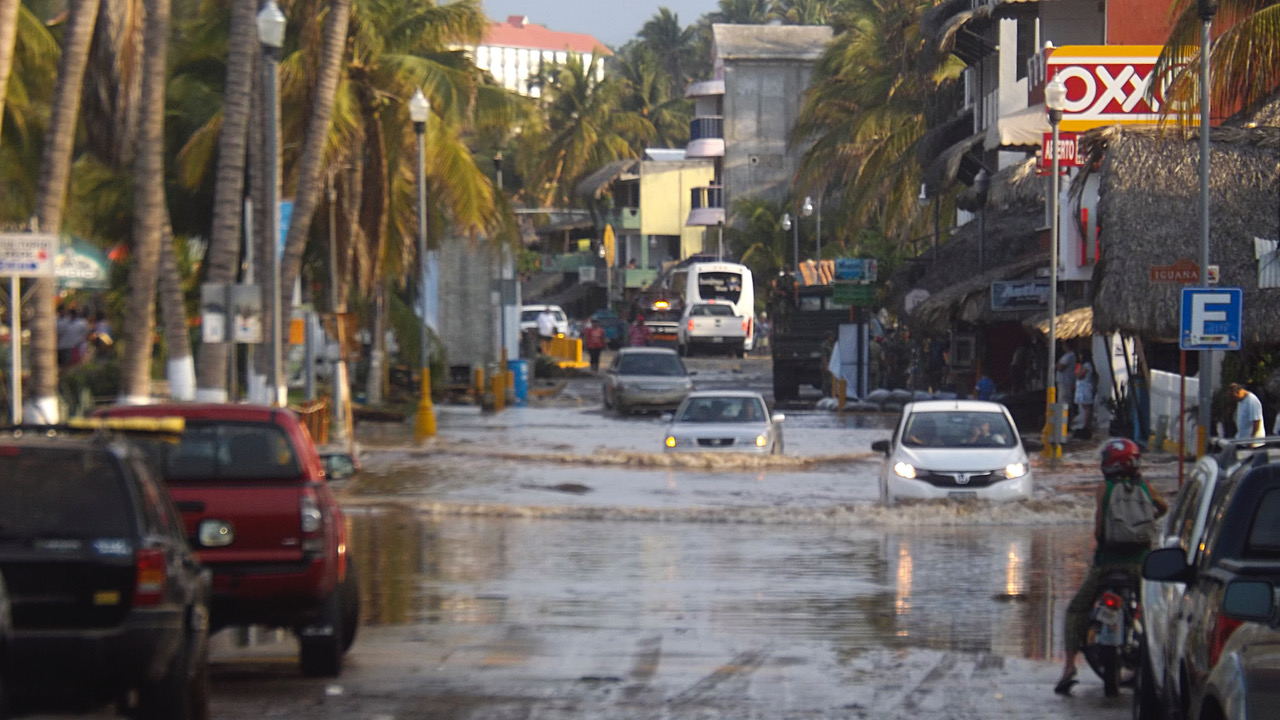
Photo: Zita
Ocean Swells: Puerto's Difficult Attraction
From our archives, January 2017
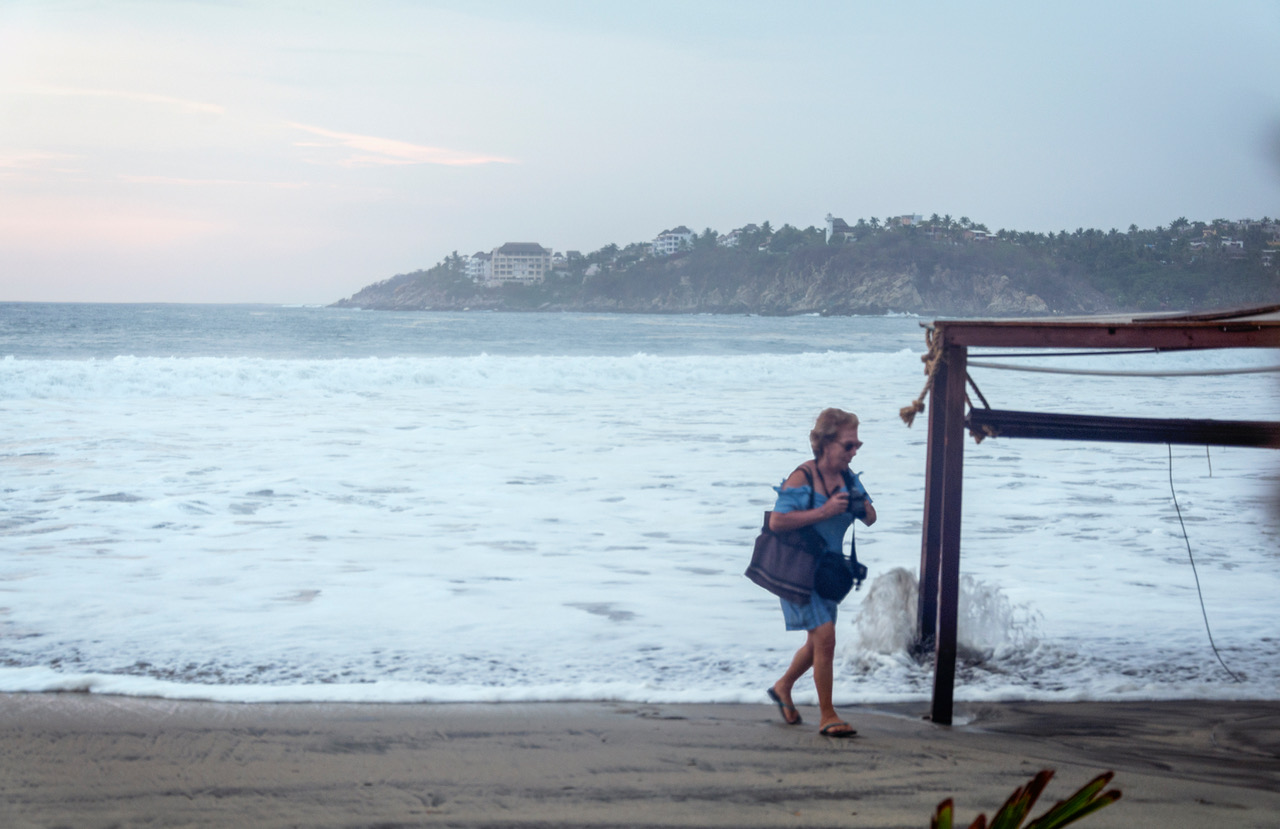
Photo: Ernesto J. Torres, Casa 12
They arrive on Zicatela like a fleet of waves from far away seas, first one set and then others, and it can go on like this for days. The sky is blue, there’s no wind, but the huge waves cover the beach, cross the calle del Morro, reaching the shops on the other side. This is the big swell (mar de fondo) that hits the coast every few years.
Of course, most swells are not this dramatic. Some are highly appreciated by expert surfers if not by fishermen. More than one launch has been lost on the Bahia Principal thanks to a big swell that came at night. Fortunately, now the authorities are able to issue timely warnings so that the population is prepared.
There is no swell season per se, but they do occur most frequently between May and November and only on the Pacific coast. The waves are generated by large storms on the other side of the earth. The bands of waves keep travelling, non-stop, for tens of thousands of kilometers until they hit land. Welcome to Puerto Escondido, the favorite destination of the swell!
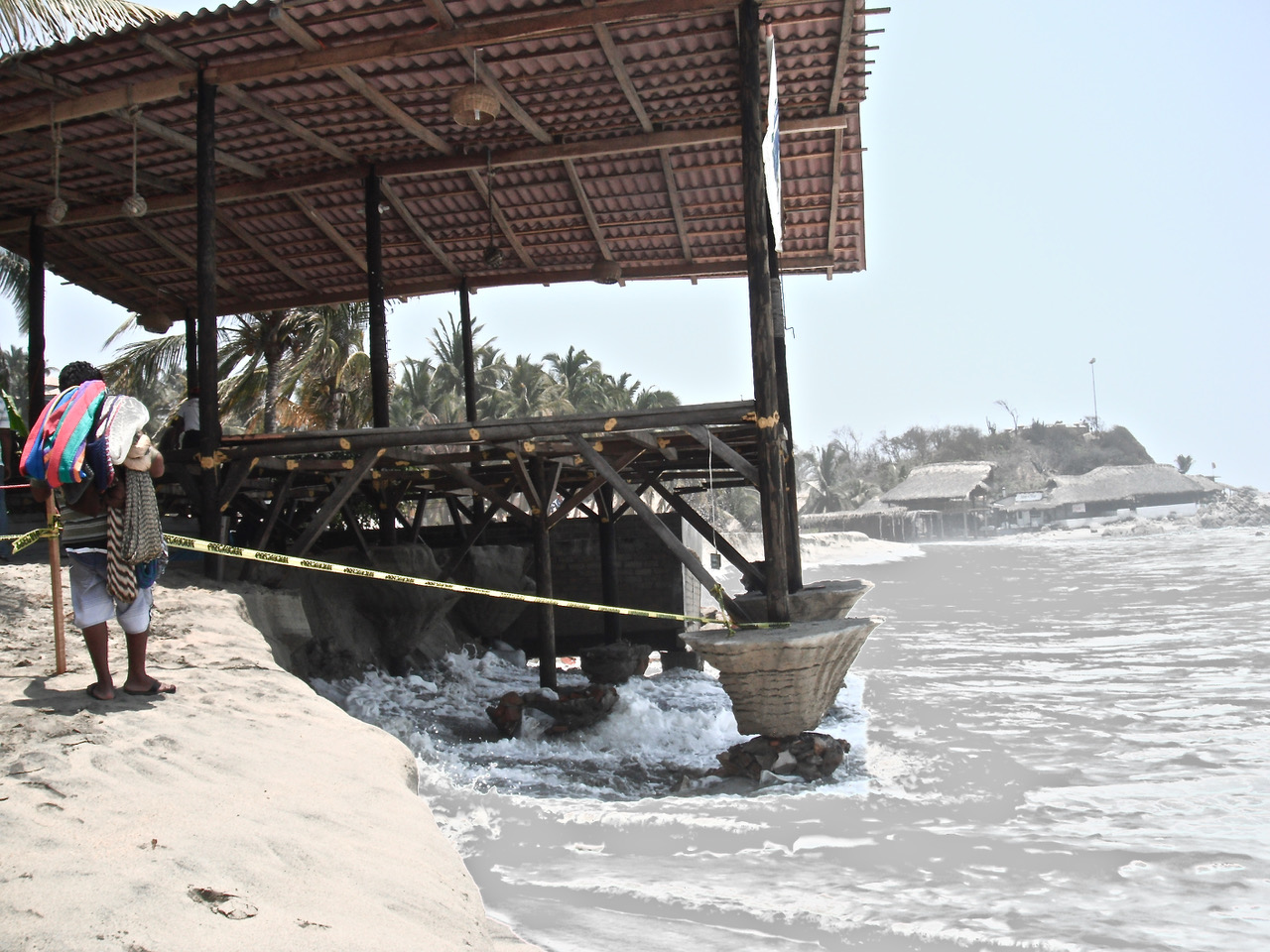
In May of 2015, Puerto Escondido experienced an enormous swell that almost ate up the beaches. I had never seen anything like this in my ten years here. Hurricanes cause a lot of destruction, but this was something else. I remember that the sky was grey and that there were constant warnings on the radio to avoid the beach. Of course, I went to see the action along with ¡Viva Puerto! photographer Ernesto J. Torres.
Despite the ubiquitous sandbags, the waves had entered the beachfront palapas during the night and the sand had risen to above the level of the elevated decks, completely covering the stairs. The Zicatela palapa that at that time housed the Kutta Bar was wrecked beyond repair with the second story terrace now hanging at an angle over the first floor. However, the authorities of Colotepec were prepared and machinery was brought in to dig trenches on the beach to handle the flood waters on the calle del Morro.
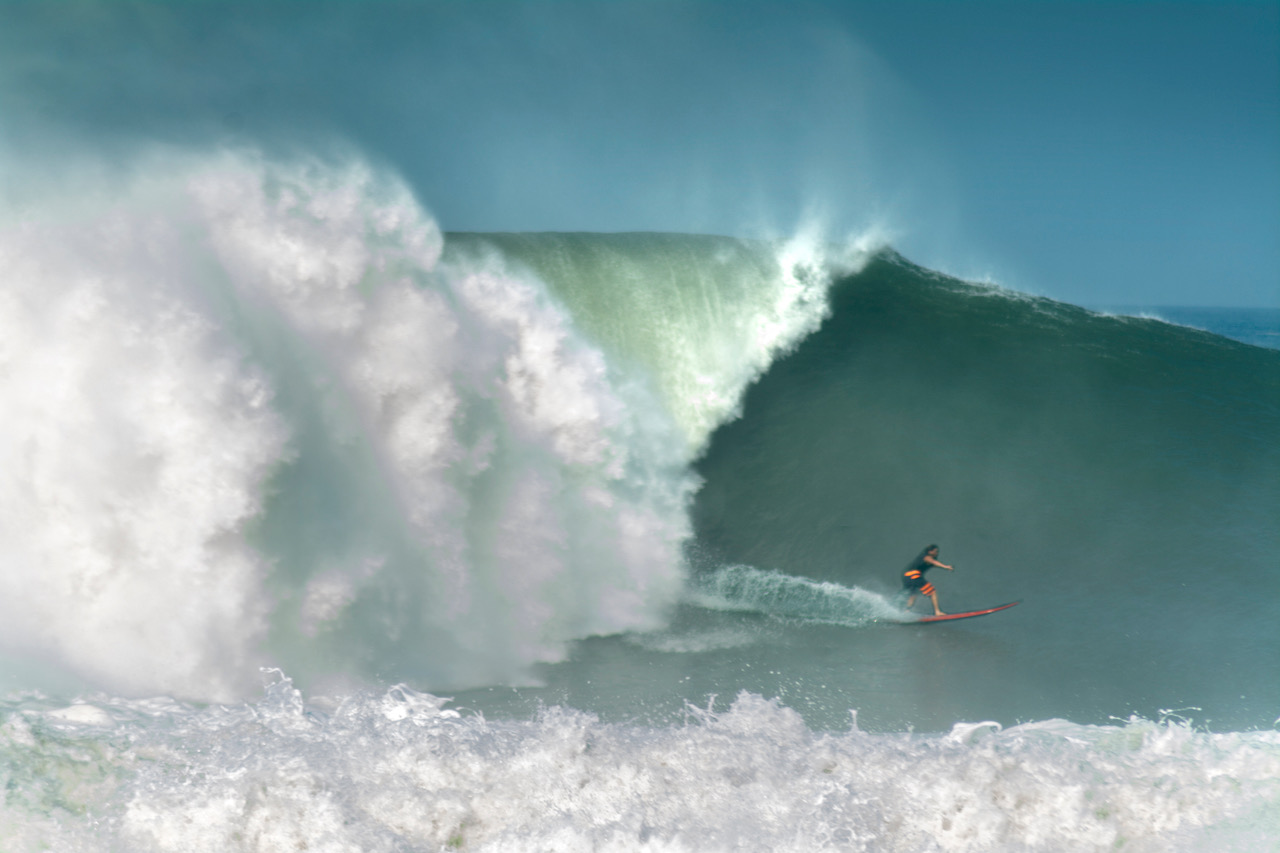
Photo: Ernesto J. Torres, Casa 12
Last year’s swell — June, 2016 — was another story. Not only didn’t it reach the palapas, but it brought great joy to surfers. Anticipating waves of between 7 and 9 meters, it was chosen by the Big Wave World Tour for its Surf Challenge 2016. Surfers from all over the world flocked to Puerto to compete in this event.
If there is a big storm off the coast of Chile or Australia, we will have a swell in Puerto. Unlike wind waves, swells do not carry water - so don’t expect exotic marine life. Tsunamis are caused by marine earthquakes, but swells are generated by the energy of tremendous storms in the south Pacific. (Remember that our summer is winter in the southern hemisphere.) Swells are characterized by the regularity of their sets — the surf rises and then is calm again until the next group appears. Each wave is of much greater length than height and presents a rounded crest. The waves never break on the sea, but when they hit the coast they can reach up to 14 meters in height.
There’s no need to be afraid of a swell, as long as you stay away from the water and obey the instructions of the life guards. Stay at some distance from the shore line and watch the experienced surfers doing their thing. After a really big swell, it may take months or even years for the beach to return to its former level, and then another swell will come and change the shoreline yet again.



